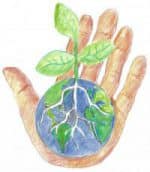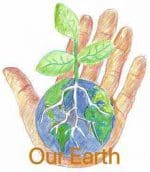Climate change has turned Peru’s glacial lake into a deadly flood timebomb
Nestled beneath the imposing white peaks of two glaciers in Peru’s Cordillera Blanca, the aquamarine Lake Palcacocha is as calm as a millpond. But despite its placid appearance it has become a deadly threat to tens of thousands people living beneath it as a result of global warming.
A handful of residents of Huaraz, the city below the lake, can recall its destructive power. In 1941 a chunk of ice broke away from the glacier in an earthquake, tumbling into the lake. The impact caused a flood wave which sent an avalanche of mud and boulders cascading down the mountain, killing about 1,800 people when it reached the city.
Today the lake is even more potentially dangerous, swollen with glacial meltwater like an almost-overflowing bathtub. A temperature rise of 0.5-0.8C between the 1970s and the 2000s has seen a third of Peru’s ice caps vanish in the last four decades.
The city’s population has grown too. With more than 150,000 inhabitants, today Huaraz is about 15 times larger than it was during the last deadly landslide.
Flood wave modelling by the University of Texas shows how a breakaway chunk of glacier could displace up to 15bn litres of meltwater from the 70-metre deep, mile long (1.7km) lake, propelling a wave of up to 30 metres over a ridge of rocks and down the mountain.
“There are around 50,000 people living in the danger zone,” says Noah Walker-Crawford, a social anthropologist from Manchester University.
“According to the authorities’ estimates, even if you were able to warn the people, there could still be about 20,000 fatalities,” he adds.
The people would have 30 minutes to evacuate, says Cesar Florez, a risk management specialist for the region’s government and the man ultimately responsible for the people’s safety.
“It’s more than enough time,” Florez says. “It’s the same time allotted to evacuate coastal areas in the case of tsunami,” he tells the Guardian, adding the escape time could be lengthened by a series of energy dissipators and dykes.
So far, however, none of that flood mitigation infrastructure is in place. For now, 10 black tubes pump out water to reduce the lake’s level. Perched on a bluff facing the lake, Calef de la Cruz radios in a status report to the regional government every two hours.
Living in a hut for up to a fortnight at a time, it is a lonely and sleepless vigil. But until an early warning system is installed, which authorities say will happen later this year, the watchfulness of De la Cruz and his colleagues is all that stands between the lake and the residents below.
But for the poor, largely indigenous farmers in the verdant mountains around the ice caps, the problem is not too much water but too little. The Andean country is home to 70% of the world’s tropical glaciers and as they gradually ebb away, a water crisis looms. Climate change has made the weather unpredictable and the unseasonal melting of the glaciers has thrown the farmers’ existence into jeopardy.
Alejandro Rosales is a 62-year-old farmer from Yarush, a tiny hamlet above Huaraz. For him, like many residents of the mountains, the snow-capped peaks are apus – beings of mythic or semi-divine importance. He never thought he would see the white peaks he gazed at as a child turn black, he says.
“Sometimes there are years when you get a good harvest; there are also years when the harvest fails. That means the children go to school without their daily bread. It’s really hard,” he adds, showing the Guardian blackened potatoes which crumble in his hands.
The potatoes, which were stored months earlier to sow later this year, are riddled with moth caterpillars. The warming has meant new pests are creeping to higher altitudes where the colder weather once held them at bay.
Saúl Luciano Lliuya, a farmer and mountain guide whose home in Nueva Florida is in Lake Palcacocha’s flood path, has filed a lawsuit against the German electro-domestic firm RWE for its role in causing global warming, as one of the world’s top emitters of carbon dioxide.
“The glacier is a source of water for those in the countryside and for us all in the city, so you can imagine what the future will be like if we don’t have it,” he says.
“From the risk problem to the water scarcity problem; all of this is what inspired me to file a lawsuit,” he adds. Lliuya’s 2015 demand for damages from RWE has been admitted on appeal by a higher regional court in the German city of Hamm.
Lliuya is seeking compensation of about ,000 (£15,000) from the energy giant to help install the lake’s safety measures, as well as the reimbursement of €6,384 he has spent on flood protection.
It is a tiny amount for the company, he admits but adds: “What we are saying is this is happening and it’s putting us at risk. The damage caused is irreversible; for that no amount of money is enough.”
guardian.co.uk © Guardian News & Media Limited 2010
Published via the Guardian News Feed plugin for WordPress.

